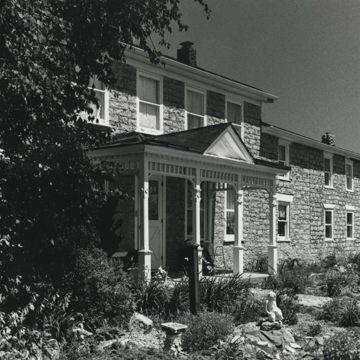You are here
Gratiot House Farm
This building is the last reminder of Gratiot’s Grove, a mining settlement founded by Henry Gratiot and his brother, which for a time was one of the largest communities in Wisconsin’s lead-mining region. The Gratiots had migrated upriver from St. Louis, and aided by Catherine Myott, a métis woman of mixed Ho-Chunk and French descent, they received permission from the Indigenous Ho-Chunks to establish a mining claim. Henry Gratiot soon came to dominate the local economy, owning one of the area’s two smelters, a general store, and a flour mill, and he co-owned a sawmill. He lived in this handsome limestone ashlar house only a short time before he died in 1836, but it remained in his family.
The original structure was an I-house, strictly symmetrical with spare detailing—stone lintels over the first-story windows and a simple frieze and cornice. Sometime in the 1850s, the Gratiot family added a second story to the east wing and appended a second two-story block with a hipped roof. By the 1890s, the lead-mining boom ended, and this settlement was abandoned. Beginning in 2010, Chris Price and Heather Walker rehabilitated the house as an inn, open seasonally.
Writing Credits
If SAH Archipedia has been useful to you, please consider supporting it.
SAH Archipedia tells the story of the United States through its buildings, landscapes, and cities. This freely available resource empowers the public with authoritative knowledge that deepens their understanding and appreciation of the built environment. But the Society of Architectural Historians, which created SAH Archipedia with University of Virginia Press, needs your support to maintain the high-caliber research, writing, photography, cartography, editing, design, and programming that make SAH Archipedia a trusted online resource available to all who value the history of place, heritage tourism, and learning.













